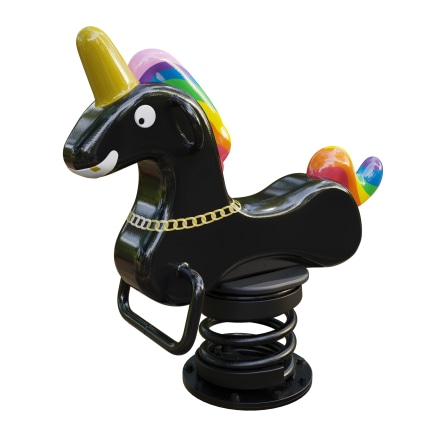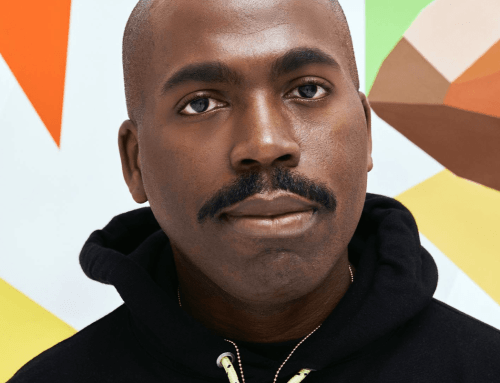

Derrick Adams moved to New York from Baltimore nearly 30 years ago because there weren’t many opportunities for him as an artist. Now Adams, 52, whose work has been recognized worldwide, wants to create spaces for Black artists in Baltimore, so they won’t have to leave home to find success.
Two years ago, he purchased a 7,250-square-foot lot on Greenmount Avenue at Chestnut Hill Avenue in Waverly in North Baltimore for about $50,000 to build a cultural center known as the Black Baltimore Digital Database. In December, the Mellon Foundation awarded the organization a two-year, $1.25 million grant the foundation says is “to support organizational capacity, design and development, community engagement and programming.” The current plan is to open it in the next five years.
Plans also call for establishing an artists-in-residency program in the same neighborhood called the Last Resort Artist Retreat. It will open nearby next year, according to Jelisa Blumberg, creative director for Black Baltimore Digital Database.
Adams said he hopes the database will encourage people to learn about the contributions of Black people such as Baltimore native Billie Holiday to the history of the city. The building, specifically the art gallery, also will allow Black artists to showcase their talent, he added.
“The history of Black contributions in the culture is overlooked, and it’s a very important part of the American history,” he said. “There have been so many pioneering Black Americans in Baltimore who established many things in the social and political world.”
He said his organization will be different than other institutions dedicated to Black history in the city — such as the Reginald F. Lewis Museum and the National Great Blacks in Wax Museum — because it will have digital archives. Families also will be able to store digital memories of their loved ones there.
“I’ve traveled around the world, and I’ve seen other cities in the United States practice some of these things I’m interested in,” Adams said. “What I am doing is not necessarily unique ... What I think is unique is that I’m creating a digital component of recording history that will make things more accessible.”
Justin Garrett Moore, Mellon Foundation’s Humanities in Place Program officer, praised Adams’ project. The Humanities in Place program supports diverse projects to better tell America’s history.
“The Black Baltimore Digital Database will collect and celebrate the lives and contributions of Black people to Baltimore and our nation’s culture and development,” he said.
Adams, who now lives in Brooklyn, New York, grew up in Park Heights in Northwest Baltimore and graduated from Harbor City Academy in East Baltimore in 1989.
Before earning a bachelor’s in fine arts from the Pratt Institute in Brooklyn about 30 years ago, he worked full-time jobs while taking classes at Baltimore City Community College and the Maryland Institute College of Art. In 2003, he earned a master’s in fine arts from Columbia University in New York City. He’s also co-deputy chair of Brooklyn College’s master of fine arts programs.
His mother, Sandra Davidson, and his father, Walter Adams, are both deceased. His parents separated when he was 11, and he grew up with his stepfather, Guy Curtis Davidson. His older sister, Victoria Adams-Kennedy, is a Baltimore-based writer.
When he was 9, he won a city art contest while attending Edgecombe Circle Elementary, which is now Park Heights Academy. The poster was later hung in the mayor’s office.
“I’m glad to see him being recognized and acknowledged for what has been his life’s work,” his sister Adams-Kennedy, of Northeast Baltimore, said. “He’s always a person who gives helpful advice to people.”
Blumberg said artists will be able to keep ownership of their data stored in the archive.
“It’s not owned by an institution. It becomes [kind of] a space of shared ownership over data,” she said. “It’s also exciting because we’re also interested in having different tools for people who maybe don’t always have access to record audio or scan photos.”
Adams said the goal is to focus on the city’s positive aspects.
“There’s a lot of stigma about violence in Baltimore and crime, but there’s less emphasis on the survival of the citizens of Baltimore and how Baltimore is such a vibrant city,” he said. “There’s a lot of positivity brewing, and one of the challenges for me is the lack of education for some of the younger people to understand where they’re from.”
His artwork, which often focuses on uplifting Black culture, has been featured at places such as the Museum of Arts and Design in New York and the Museum of Contemporary Art in Denver, both in 2018. In addition, his public exhibitions include “Men of Change: Power. Triumph. Truth.” at the National Underground Railroad Freedom Center in Cincinnati in 2019.
“[I get inspired] by observing Black culture and the movement of it,” he said.
This article is part of our Newsmaker series, which profiles notable people in the Baltimore region who are having an impact in our diverse communities. If you’d like to suggest someone who should be profiled, please send their name and a short description of what they are doing to make a difference to: Diversity, Equity, and Inclusion Editor Kamau High at khigh@baltsun.com.